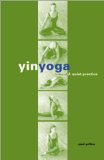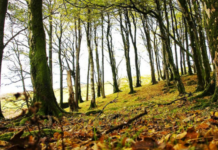
Yin Yoga
, by Paul Grilley
White Cloud Press, 1883391439, 118 pp. (incl. bibliography.), 2002
Admittedly, my study of yoga has been mostly superficial: I’ve read a few books, but never studied with a professional teacher. However, I do enjoy the few asanas (poses/postures) that I do practice regularly, and was glad to receive an opportunity to expand on them.
Grilley combines Chinese mysticism with Indian philosophy to create yin yoga, incorporating the Modern Meridian Theory of Dr. Hiroshi Motoyama and Dr. James Oschman. This theory postulates that the meridians run through the connective tissue of the body, representing the yin energy, whereas the muscle tissue represents the yang. Included are several colour diagrams of the body and connective tissue to illustrate this point. The main difference between what Grilley calls ‘yang yoga’ and ‘yin yoga’ is that the postures in the latter are held longer, with the muscles relaxed, rather than the straining of ‘yang yoga’.
A large variety of poses are illustrated with photographs and detailed explanations on the benefit and suggestions for the novice and more advanced student, giving a range in the degree of difficulty. Three sample routines are included with various emphasis on spine, hips and legs and then a combination. The sample routines are arranged in such a way that the transition between them feels smooth and natural
Several sitting postures are detailed as well, with brief descriptions of the chakras, and a variety of pranayama and meditation techniques, including Sushumna Purification, chakra and kundalini meditation, Bija or “seed” mantras, etc.
Regarding chakras, Grilley brings up an excellent point often overlooked:
‘When trying to describe where a chakra “is” one is in a dilemma. Common language suggests that they are physically located in the spine but the reader should bear in mind that this is both true and false. A “broken heart” is a real experience that indeed seems cantered in the heart but that is not where the feelings “are”. The chakras have a physical correspondence but they are more than physical. Bear this in mind when reading about “where” a chakra “is”. Don’t be limited by only physical conceptions.’1
I found the practical section to be effective and the theory is as sound as any. This is definitely a book I value, and suggest it to anyone looking for a different perspective on yoga.
- pg. 93 [↩]








